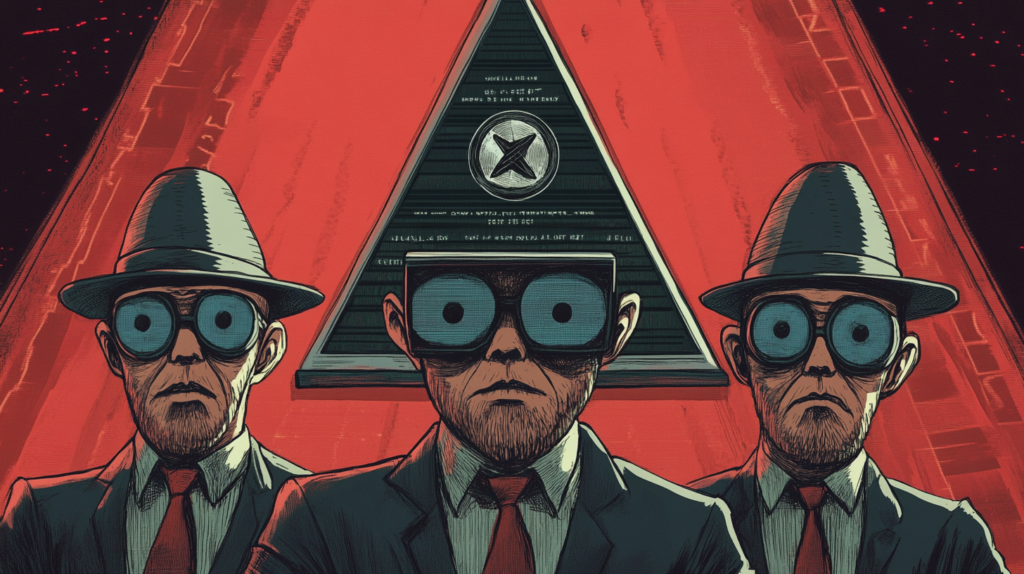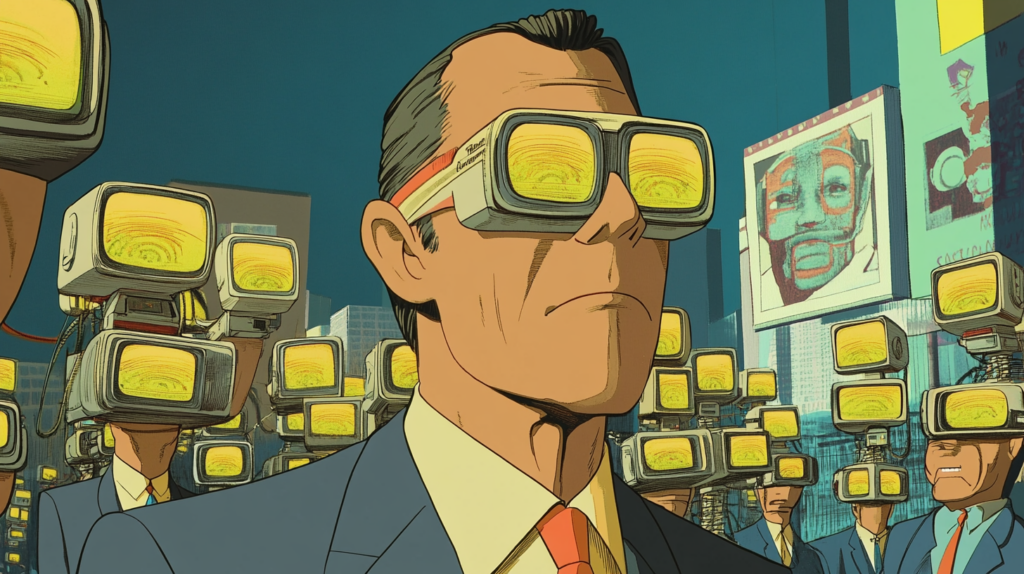Cartoons have long been a captivating medium that transcends age, culture, and time. Their colorful imagery, whimsical storytelling, and memorable characters invite viewers into imaginative worlds where the rules of reality are playfully bent or entirely reinvented. Yet, beyond the surface-level charm of these animated narratives, a subculture of conspiracy theories has emerged—one that posits cartoons contain hidden messages, subliminal cues, or secret symbols deliberately embedded by creators. These theories claim that beneath the entertaining veneer, cartoons may be used to convey political, cultural, or even occult messages to unsuspecting audiences.
This article explores the multifaceted realm of cartoon conspiracy theories, examining their origins, the common themes that pervade them, and the psychological and cultural factors that fuel their persistence. While many of these theories lack concrete evidence and are often dismissed by mainstream scholars, their popularity reveals much about our collective need to seek hidden meanings and patterns in the media we consume.
A Brief History of Hidden Messages in Media
The idea that media contains hidden messages is not new. Throughout history, artists and creators have been accused—or sometimes celebrated—for embedding secret symbols in their work. From Renaissance paintings filled with allegory to modern pop songs with double entendres, the interpretation of hidden content has been a recurring theme in cultural criticism. The advent of television and cartoons in the 20th century provided a new canvas for these theories, as animated shows reached massive audiences, including impressionable children.
Early conspiracy theories in media often centered around subliminal advertising or political propaganda. In the 1950s and 1960s, concerns about subliminal messages were rampant, and researchers conducted experiments to determine whether flashing images or sounds too quickly for conscious perception could influence behavior. Though the scientific consensus has largely debunked the notion that subliminal messages can control minds, the idea lingered and evolved. As animation became a dominant form of entertainment, especially for younger audiences, it was only a matter of time before conspiracy theorists began scrutinizing cartoons for secret meanings.

The Allure of Conspiracy Theories in Cartoons
Psychological Underpinnings
Humans are natural pattern seekers. Our brains are wired to find meaning, even in random or ambiguous stimuli. This tendency, known as apophenia, can lead to the perception of hidden messages where none were intentionally placed. Conspiracy theories often provide a sense of order or understanding in an increasingly complex and unpredictable world. In the context of cartoons, where the boundary between fantasy and reality is already blurred, the search for secret messages can be especially enticing.
For some, believing that cartoons contain hidden messages is a way of asserting control or insight over a media landscape perceived as manipulative or overly commercial. Conspiracy theories can also serve as a form of resistance against established authorities. By suggesting that cartoon creators are part of a larger, clandestine agenda, theorists can feel as though they are part of an enlightened minority that has uncovered the “truth” behind mainstream media.
Cultural and Social Factors
The popularity of conspiracy theories in cartoons is also tied to broader cultural trends. In an era where distrust of government and institutions is widespread, many people are predisposed to question official narratives. Cartoons, with their seemingly innocent and playful nature, become a fertile ground for alternative interpretations. Moreover, the very nature of cartoons—often filled with symbolism, exaggerated expressions, and surreal imagery—provides ample material for those looking to decode hidden meanings.
The rise of the internet and social media has further amplified these theories. Online forums, blogs, and video channels dedicated to “uncovering” hidden messages in cartoons have proliferated, enabling conspiracy theories to spread rapidly and gain traction among communities of like-minded individuals.
Common Themes in Cartoon Conspiracy Theories
While cartoon conspiracy theories vary widely in their specifics, several recurring themes can be identified:
Subliminal Messaging
One of the most common claims is that cartoons deliberately include subliminal messages—images or sounds that are flashed on screen too quickly for the conscious mind to detect. These messages are said to influence behavior or shape perceptions subtly. For example, some theorists have alleged that scenes in certain cartoons include brief, hidden flashes of words or symbols intended to instill consumerist desires or promote political ideologies.
Despite decades of research, there is little credible evidence that subliminal messages in cartoons have any measurable impact on viewers. Most experts agree that while the concept is intriguing, the technical limitations of subliminal perception make it unlikely that animated producers would rely on such methods to control audience behavior.
Political and Social Agendas
Another recurring theme in cartoon conspiracy theories is the notion that cartoons serve as vehicles for promoting specific political or social agendas. Some theories claim that certain animated series subtly advocate for liberal or conservative ideologies, or that they are used to indoctrinate children with progressive or radical ideas. This perspective often arises in politically polarized environments, where critics of a particular ideology are inclined to see its influence everywhere.
For instance, shows like The Simpsons or South Park have been scrutinized for their satirical depictions of government and authority. While these shows are widely recognized as social commentaries that use humor and exaggeration to critique various aspects of society, conspiracy theorists sometimes interpret these critiques as evidence of a covert effort to undermine traditional values or promote a hidden political agenda.
Occult and Esoteric Symbols
A more sensationalized aspect of cartoon conspiracy theories involves claims of occult symbolism. Some theorists assert that cartoon creators embed hidden references to secret societies, the occult, or ancient mythologies within their work. These symbols can range from numerological codes to depictions of mythical creatures or arcane sigils, all purportedly hinting at a hidden narrative that goes beyond the surface-level story.
For example, the use of specific numbers, color schemes, or recurring visual motifs in a cartoon might be interpreted as a nod to secretive groups like the Illuminati or as part of a larger esoteric tradition. While these interpretations can be compelling for those already inclined to believe in hidden orders, they often rely on speculative correlations rather than concrete evidence.
Commercial Manipulation and Consumerism
Another prevalent theory suggests that cartoons are designed not just to entertain but to indoctrinate children into consumerist culture. Critics argue that the integration of branded merchandise, product placements, and even narrative elements that encourage consumer behavior is not incidental but a deliberate strategy by corporations. According to this view, animated shows are part of a broader system that conditions young viewers to associate happiness and success with material possessions, thereby ensuring lifelong customer loyalty.
Although there is no doubt that cartoons often serve as marketing tools—consider the vast array of toys, clothing, and other products tied to popular animated franchises—interpreting these strategies as part of a sinister conspiracy tends to overlook the economic realities of the entertainment industry. Commercial partnerships are standard practice in media production and are typically disclosed as part of broader marketing efforts.

Notable Examples and Case Studies
To better understand the phenomenon of cartoon conspiracy theories, it is helpful to examine a few notable examples that have captured public attention.
The Simpsons: More Than Just Satire?
The Simpsons is one of the most popular and enduring animated series in television history. Its longevity and cultural impact have made it a prime target for conspiracy theorists. Over the years, several theories have emerged suggesting that the show contains hidden messages about politics, society, or even predictions of future events. For instance, some theorists point to the recurring use of specific symbols or numbers throughout the series, arguing that they hint at a broader narrative about the decline of Western civilization.
While many of these claims are based on selective interpretation and coincidences, they underscore the intense scrutiny that culturally significant cartoons can attract. The creators of The Simpsons have often commented on the conspiracies surrounding their work with humor and deflection, emphasizing that the show is primarily a vehicle for satire and social commentary rather than a platform for secret agendas.
Looney Tunes and Subliminal Messaging
During the mid-20th century, some critics alleged that classic cartoons from the Looney Tunes series contained subliminal messages and hidden symbols. Observers claimed that the rapid-fire, anarchic humor of characters like Bugs Bunny and Daffy Duck was laced with subtle cues intended to condition viewers in favor of certain consumer products or political ideas. Despite widespread interest in these theories, rigorous analysis has found little evidence to support the notion that subliminal messaging was a deliberate tactic in these cartoons.
The case of Looney Tunes illustrates how historical context can shape the interpretation of media. In an era marked by Cold War anxieties and growing consumer culture, it is perhaps unsurprising that some viewers were predisposed to look for hidden messages in popular entertainment.
Modern Animated Series and Digital Age Theories
The digital age has given rise to a new wave of cartoon conspiracy theories focused on modern animated series. With the proliferation of online content and social media discussion, theories about hidden messages in shows like South Park, Rick and Morty, or even children’s cartoons like SpongeBob SquarePants have flourished. These theories often leverage the complexity and layered storytelling of modern animations to argue that creators are embedding secret narratives or commentary on current events.
For instance, episodes that tackle controversial topics—such as political corruption, societal inequality, or environmental degradation—can be interpreted in multiple ways. Conspiracy theorists sometimes claim that the true intent behind these episodes is obscured by a veneer of humor and satire, leaving astute viewers to decode the “real” message. However, most critical analyses suggest that such interpretations tend to exaggerate the intentionality behind creative decisions and conflate artistic expression with covert messaging.

The Role of Media Literacy and Critical Thinking
Given the wide array of claims surrounding hidden messages in cartoons, it is important to approach such theories with a critical mindset. Media literacy—the ability to analyze and evaluate media content—plays a crucial role in discerning fact from speculation.
Evaluating Sources and Evidence
One of the first steps in assessing any conspiracy theory is to examine the sources of the claims. Many theories about hidden messages in cartoons are disseminated through online forums, blogs, and social media channels that may not adhere to rigorous standards of evidence. Critical thinkers should ask: Are there peer-reviewed studies or reputable sources supporting these claims? Do the alleged hidden messages hold up under scrutiny, or are they the result of overinterpretation and selective bias?
Recognizing Cognitive Biases
As noted earlier, human brains are naturally inclined to find patterns, even where none exist. Confirmation bias—the tendency to seek out information that confirms one’s preexisting beliefs—can lead individuals to interpret ambiguous visual or auditory cues as evidence of hidden messages. By recognizing these cognitive biases, viewers can better appreciate that what might seem like a deliberate symbol could simply be an artistic flourish or even an unintended byproduct of the creative process.
The Value of Context
Context is key in understanding any piece of media. Cartoons are produced within specific cultural, economic, and historical contexts that shape their content. Alleged hidden messages may lose their meaning or appear far less significant when considered against the backdrop of the show’s overall intent and the conditions under which it was produced. Understanding the broader context in which a cartoon was created can help separate artistic expression from unfounded conspiracy theories.
The Impact of Conspiracy Theories on Cartoon Culture
Fan Engagement and Community Building
Despite—or perhaps because of—the controversy they generate, conspiracy theories have become an integral part of the way some fans engage with cartoons. Online communities dedicated to dissecting every frame of popular animated series have formed around these ideas, creating spaces where enthusiasts can share theories, debate interpretations, and collectively analyze content. This phenomenon demonstrates the enduring appeal of mystery and hidden meanings in media, even if the conclusions drawn are speculative.
Influence on Critical Reception
The circulation of conspiracy theories can also affect the critical reception of a cartoon. When a show is widely rumored to contain hidden messages, it may be scrutinized more intensely by critics and academics. In some cases, this heightened scrutiny can lead to more in-depth analysis of the work’s themes, symbolism, and narrative techniques—even if the original intent was purely entertainment. Thus, while many conspiracy theories may lack factual support, they can inadvertently enrich the discourse around animated media by prompting audiences to look more closely at the art form.
Commercial and Creative Considerations
There is also a commercial dimension to consider. Cartoons are often products of large media corporations that must navigate both creative expression and commercial interests. Conspiracy theories that allege hidden agendas or subliminal messages can sometimes be used as marketing tools—whether intentionally or not—to generate buzz around a series. Conversely, creators may be forced to address or refute such theories in interviews and promotional materials, influencing the public narrative around their work.
Debunking and Criticism of Cartoon Conspiracy Theories
Lack of Credible Evidence
A major criticism of many cartoon conspiracy theories is their reliance on anecdotal evidence and selective interpretation. Comprehensive analyses of animation techniques, production processes, and creator interviews have repeatedly failed to substantiate claims of deliberate hidden messages. Most theories are based on tenuous connections rather than documented intent, making them more a reflection of viewer psychology than of actual production practices.
The Role of Satire and Parody
It is also important to recognize that many modern cartoons intentionally blur the lines between satire, parody, and genuine social commentary. In shows that are self-referential and meta in their humor, what might appear to be a hidden message can often be understood as an overt parody of conspiracy theories themselves. Creators sometimes include absurd or exaggerated elements precisely to satirize the notion that every detail holds a deeper, secret meaning.
Media and Public Perception
The persistence of these theories also speaks to a broader public fascination with the idea that there is more to popular media than meets the eye. This fascination can sometimes lead to misinterpretation and overanalysis, with viewers reading layers of meaning into cartoons that were never intended by their creators. Critics argue that while it is healthy to engage with media critically, it is equally important to balance skepticism with an understanding of artistic intent and production realities.
The Intersection of Art, Entertainment, and Ideology
The discussion surrounding hidden messages in cartoons ultimately raises broader questions about the role of art and entertainment in society. Are cartoons simply vehicles for storytelling and humor, or do they serve as conduits for deeper ideological messaging? While the evidence overwhelmingly supports the view that most cartoons are created primarily for entertainment and commercial success, the persistence of conspiracy theories suggests that viewers often look for meaning beyond the surface. This tendency reflects a broader cultural moment—one marked by rapid technological change, pervasive media influence, and a general distrust of authority.
Art, by its very nature, is open to interpretation. Different viewers bring their own experiences, beliefs, and biases to the viewing experience, which can lead to a wide array of interpretations, some of which may seem conspiratorial. The fact that a cartoon can be read in multiple ways is a testament to its complexity and the richness of its visual and narrative language. However, it also underscores the importance of media literacy and the need to differentiate between intentional artistic choices and projections of personal or cultural anxieties.

Embracing Ambiguity Without Losing Sight of Reality
Cartoon conspiracy theories—whether they concern subliminal messages, hidden political agendas, or occult symbolism—offer a fascinating glimpse into the ways audiences interact with popular media. They reflect our innate desire to uncover hidden truths and make sense of a complex world. Yet, while these theories can spark engaging discussions and fuel creative fan communities, it is essential to approach them with a critical mindset.
By examining the production processes behind cartoons, understanding the historical and cultural context in which they are made, and evaluating the evidence (or lack thereof) for hidden messages, we can appreciate that much of what is claimed by conspiracy theorists is more a reflection of audience interpretation than deliberate intent on the part of creators. Cartoons remain a vibrant and dynamic art form—one that invites both straightforward enjoyment and deeper analysis without necessarily harboring secret agendas.
In the end, the allure of conspiracy theories in cartoons lies in their ability to transform passive viewing into an active, interpretative exercise. They remind us that art is not just consumed—it is experienced, questioned, and reimagined by each viewer. While the search for hidden messages can be an entertaining and intellectually stimulating endeavor, it is important to recognize the difference between artistic metaphor and manufactured conspiracy. The magic of cartoons, after all, resides in their capacity to capture the imagination, tell compelling stories, and bring joy to millions, not in covert plots hidden within every frame.
As we move further into the digital age—where the lines between media, technology, and ideology continue to blur—the conversation around hidden messages in cartoons is likely to evolve. Whether driven by genuine inquiry or the playful spirit of fan speculation, these discussions underscore the power of animated storytelling and its profound impact on culture. For viewers, the challenge is to remain both curious and discerning: to enjoy the colorful, imaginative worlds of cartoons while maintaining a healthy skepticism about the hidden narratives we might be inclined to see.
Ultimately, uncovering the “hidden messages” in cartoons is less about revealing secret plots and more about understanding our own perceptions and the myriad ways in which we interpret the art that surrounds us. By embracing ambiguity without losing sight of reality, we can continue to celebrate cartoons as a testament to human creativity—a form of entertainment that, regardless of any alleged hidden messages, brings laughter, reflection, and inspiration to audiences around the world.
This post was created with our nice and easy submission form. Create your post!



